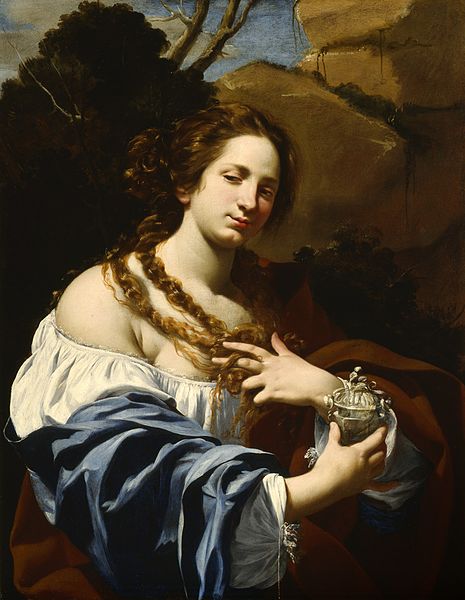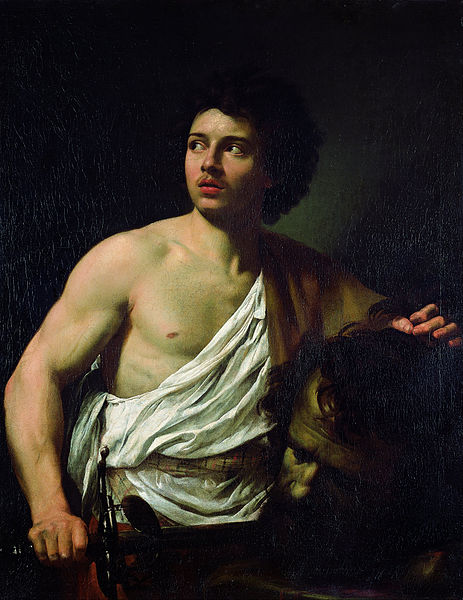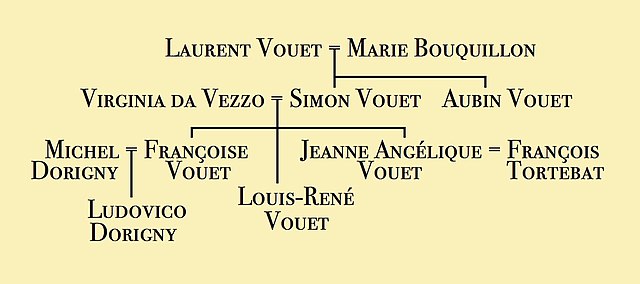Simon Vouet was a French painter who studied and rose to prominence in Italy before being summoned by Louis XIII to serve as Premier peintre du Roi in France. He and his studio of artists created religious and mythological paintings, portraits, frescoes, tapestries, and massive decorative schemes for the king and for wealthy patrons, including Richelieu. During this time, "Vouet was indisputably the leading artist in Paris," and was immensely influential in introducing the Italian Baroque style of painting to France. He was also, according to Pierre Rosenberg, "without doubt one of the outstanding seventeenth-century draughtsmen, equal to Annibale Carracci and Lanfranco."
Self-portrait (c. 1626–1627) Musée des Beaux-Arts de Lyon
Virginia da Vezzo, the Artist's Wife, as the Magdalen (c. 1627), LACMA
David with the Head of Goliath (1620–1622), Palazzo Bianco, Genoa
Vouet family tree, simplified to show those known to be artists: Simon and his father, brother, wife, son, sons-in-law, and grandson
Armand Jean du Plessis, 1st Duke of Richelieu, known as Cardinal Richelieu, was a French statesman and prelate of the Catholic Church. He became known as l'Éminence Rouge, or "the Red Eminence", a term derived from the title "Eminence" applied to cardinals and from the red robes that they customarily wear.
Cardinal de Richelieu by Philippe de Champaigne, 1642 (Musée des Beaux-Arts de Strasbourg)
The young Louis XIII; only a figurehead during his early reign; power actually rested with his mother Marie de' Medici.
Jean Warin, Cardinal de Richelieu 1622 (obverse), 1631
On the "Day of the Dupes" in 1630, it appeared that Marie de Médicis had secured Richelieu's dismissal. Richelieu, however, survived the scheme, and Marie was exiled as a result.








